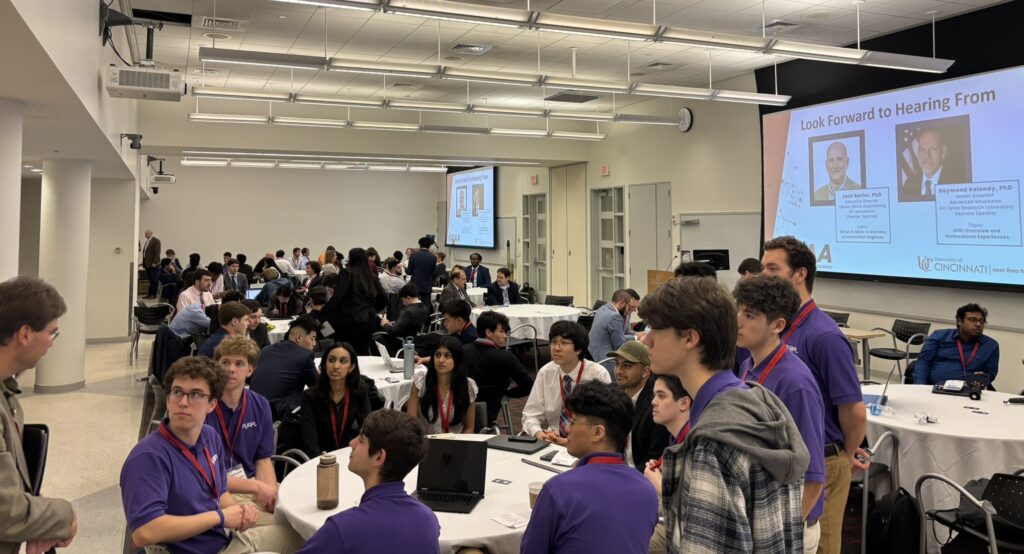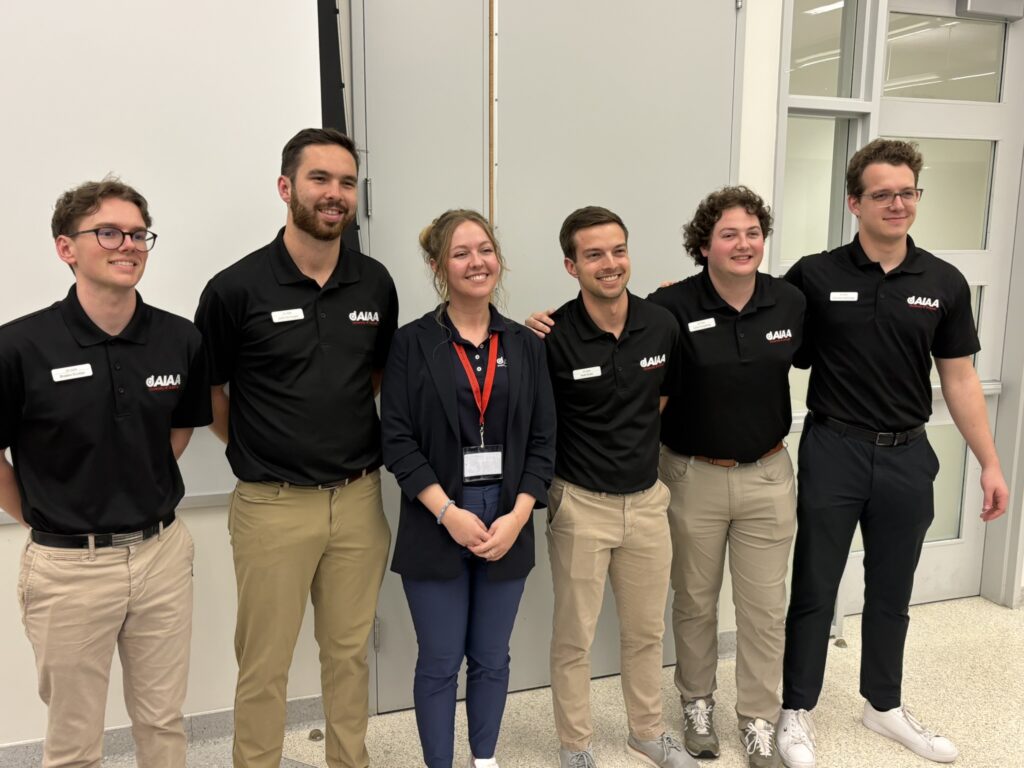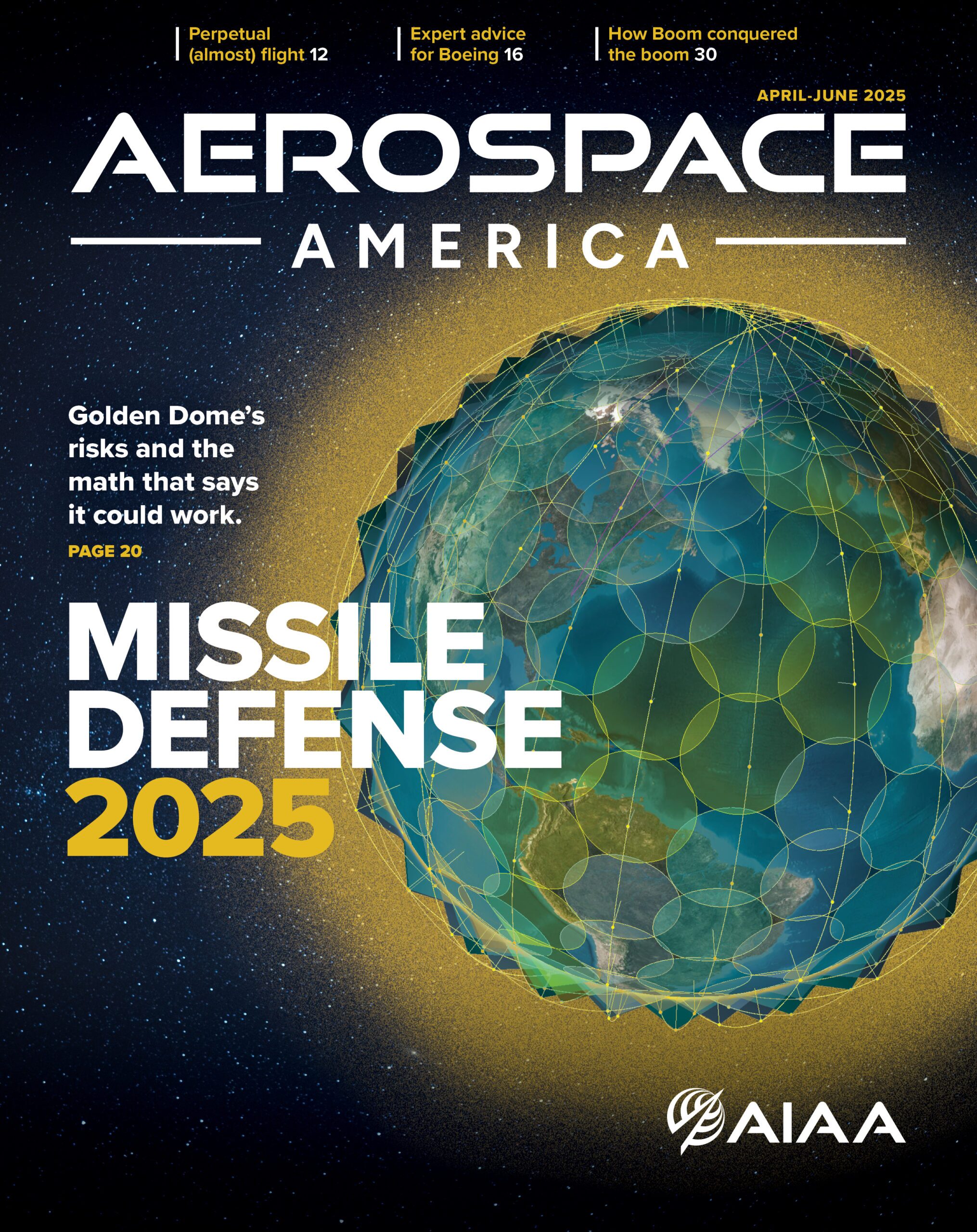The 2025 AIAA Region III Student Conference, held 4–5 April at the University of Cincinnati (UC), gave both undergraduate and graduate students, along with student teams, the opportunity to present their research and technical work. There were 48 presentations from 168 students at 12 universities in Region III and one university in Region I who had been unable to attend their region’s conference due to a scheduling conflict.
The weekend kicked off with a tour of UC’s Digital Futures building, showcasing cutting-edge aerospace research. Digital Futures is designed to foster moonshot thinking and high risk-high reward applied research.
The students heard from keynote speaker Raymond Kolonay, Ph.D., senior scientist, Advanced Structures, Air Force Research Laboratory, who gave an overview of AFRL and his own professional experiences. Jack Barter, Ph.D., executive director of Edison Works Engineering at GE Aerospace, also discussed “What It Takes to Become a Successful Engineer.”

The 2025 conference was one of the largest in recent memory and we could not have done it without our amazing volunteers, which included 59 paper and presentation judges. Attention was given to making sure all students had positive interactions. One participant stated, “The insightful feedback on our work made the experience even more rewarding as well.”

Both the Northern Ohio Section and the Dayton/Cincinnati Section provided outstanding support. Our organizers included University of Cincinnati Student Branch Chair Jack Hennegan, Vice Chair Braden Buckler, and Faculty Advisor Bryan Kowalczyk, as well as Christopher Pestak, AIAA Region III Deputy Director–Education. Special thanks to our sponsors: AIAA Foundation, GE Aerospace, CEAS Tribunal, and HX5.
Students have the option to publish their Regional Student Conference papers with AIAA; they will be available on Aerospace Research Center (ARC) later this year.
Undergraduate Category
1st Place – Velocity Characterization of a Newly Commissioned Hypersonic Ludwieg Tube Using FLEET, Rowan Quintero, University of Maryland
2nd Place – Free-Flight Testing of Ogive Flare Geometry in Hypersonic Wind Tunnel, Ryan Jones, University of Maryland
3rd Place – Continued Development and Validation of an Exoskeleton Focused Immersive Teleoperation Interface, Romeo Perlstein, University of Maryland
Graduate Category
• 1st Place – Multi-Sensor Based Adaptive Fusion Scheme for Position Estimation of Multirotor UAV Systems in GPS-Denied Environments, Luke Busse, University of Cincinnati
• 2nd Place – Cascading Delay Mitigation with Quadratic Bezier Curve Trajectory Planning, Michael Variny, Ohio University
• 3rd Place – Optimization of Thrust Vector Direction for Direct Measurement Uncertainty Minimization, Adam Jones, University of Michigan
Team Category
1st Place – Design and Implementation of a High-Powered Rocket to Investigate Flight Performance and Fin Flutter During Transonic Flight, Sam Zieba, Cesar Martinez, Ian James, Tari Himelhoch, and Cole Christopherson, Milwaukee School of Engineering
2nd Place – Mars Autonomous Resupply Constellation (MARC), Raymond Bertke, Hayden Brown, Nicholas Gomori, and Jake Ferris, Ohio State University
3rd Place – Design and Manufacturing of FANG (Fabric ANchoring Gadget) for Fabric Repair on the International Space Station, Zoe Surles, Saanvi Kunisetty, Lillian Hunt, Gabriela Zabiegaj, Ryan Smith, Tiana Foreman, Casimir Palowski, Taranpreet Singh, Alana Falter, Denver Haslett, Andrew Jace Bernando, Kate Pactol, Parker Lenkaitis, Jennifer Ren, Emma Held, and Julia Kalil, University of Illinois Urbana-Champaign




